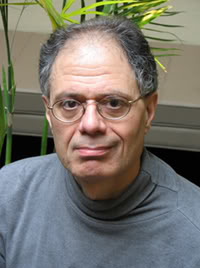It is often said these days that America is a Christian country. If that's true, then a great many Americans should be worried about their eternal salvation. According to Jesus, when He returns to settle accounts at the Last Judgment, He will separate the sheep from the goats, telling the goats: "Go, you damned souls, into the fire. For you saw Me hungry and ragged and homeless and unemployed and uninsured, and you ignored Me." And when the goats bleat in self-justification: "But, Lord, when did we see You hungry or ragged or homeless or unemployed or uninsured?" He will answer furiously and unmercifully: "When you ignored the poorest of the poor, you ignored Me. Go, now, to Hell." It's right there in Matthew, chapter 25, verses 41 to 46.
For several decades, according to Jeffrey Sachs in his important and widely discussed new book, "The End of Poverty," American policy has largely ignored the poorest of the poor. Our leaders have talked a good game: so much so that, as Sachs reports, "Americans, on average, believe that foreign aid accounts for 20 percent of the federal budget." But in fact, it accounts for only eight-tenths of one percent of the budget - 1/24th as much as the average American believes. Perhaps the average American can plead ignorance at the Last Judgment.
So who are the poor, and what do they need? 1.1 billion people have less than $1 a day of income. This is officially designated "extreme" poverty. Another 1.6 billion have between $1 and $2 a day; this is "moderate" poverty. This large slice of humankind either cannot, or can just barely, meet their basic needs. Mostly they live in rural isolation or in urban slums, roughly 90 percent of them in three regions: East Asia, South Asia, and sub-Saharan Africa.
There has never been any mystery about how to increase a country's per capita income: simply invest capital in it, using a modicum of good business sense. However, if your citizens don't have any income left over after meeting their basic needs, then you have no capital to invest in new means of production. And since the old means of production wear out - depreciate - they eventually produce even less income, so you are still further from having the necessary capital. Sachs coins the useful term "poverty trap" to explain why some countries simply cannot pull themselves up by their bootstraps, however determined.
Why are some countries but not others caught in the poverty trap? It is not primarily a matter of Anglo-Saxon propriety or American ingenuity or Confucian dutifulness. Nor is it a matter of African fecklessness. Countries are poor, Sachs argues, because they are landlocked or resource-poor or afflicted with unfavorable climates or disease ecologies (like the global malaria belt). Above all, they are poor because they have always been poor. Just as economic growth is cumulative and self-sustaining - a virtuous circle - economic stagnation is a vicious circle. This is evident above all in demographics and literacy. Poverty means high child mortality, which means high birth rates, which means both that women will not be educated for the work force (since they must spend the bulk of their lives raising children) and that there will not be enough money to educate all the children (leaving many illiterate). Economic growth invariably lowers birth rates and raises literacy rates.
For those countries currently stuck in the poverty trap, there is only one way out: the kindness of strangers. The rich countries must invest in them. This will not, however, be an endless or staggering burden. Indeed, the really astonishing revelation in "The End of Poverty" is how very little money it would take to pull our billion wretched fellow humans out of hopeless misery and set them on the lowest rung of the economic development ladder. Sachs, one of the world's leading development economists, director of Columbia University's Earth Institute and special advisor to the UN Secretary General, sketches out a sequence of targeted, prioritized investments over ten to fifteen years. After that, if history is any guide, the formerly wretched will begin trading with us, competing with us, and enriching us.
You are doubtless wondering, gentle reader: How much is "very little"? What is this actually going to cost you, the American taxpayer? Actually - unless you are a very special American taxpayer - nothing. Sachs and his associates at the UN Millennium Development Project have calculated that a ten-year investment plan, increasing from $135 billion in 2006 to $195 billion in 2015, would decrease extreme poverty in the world by half. That amounts to between 0.4 and 0.5 percent of the annual income of the developed countries - less than the 0.7 percent that they have repeatedly committed themselves to in the last decade. (The US contribution - the lowest in the world - is 0.15 percent, or 15 cents per hundred dollars of national income.)
The US share of Millennium Development aid comes to between $40 and 50 billion per year between 2006 and 2015. As Sachs points out: "[Under President Bush's tax cut,] the tax savings of households above $500,000 per year, equal to [only 0.6 percent of the population but] 22.7 percent of the total tax savings, amounted to around $50 billion per year, more than enough for the United States to pay its share." Alternatively, a 5 percent surtax on incomes above $200,000 (which would affect only 2.9 percent of the population) would yield the same amount. (And of course, the just-repealed estate tax would have covered nearly the entire ten-year US contribution.)
Rarely have so few had it in their power to give so much help - at a cost they can so easily afford! - to the poorest of the poor. Let's hope all those good Christian politicians in Washington seize the opportunity. Otherwise - "into the fire."
[END]
